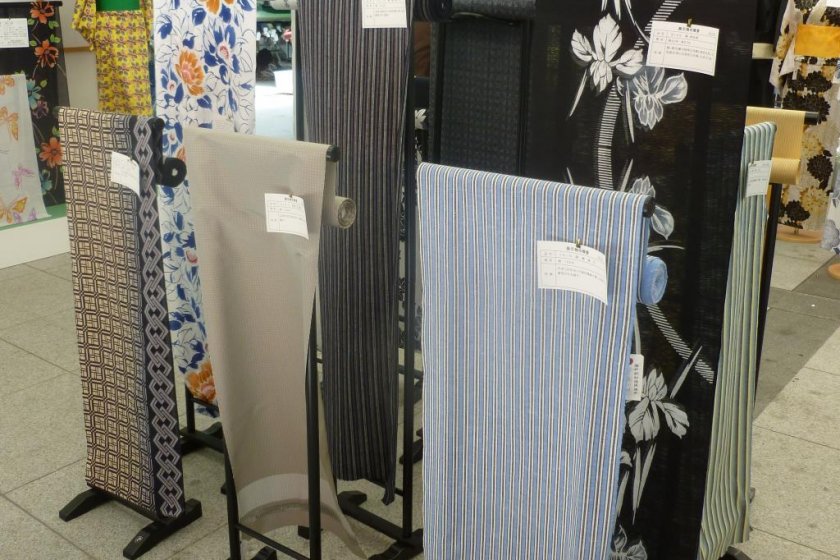Go to a firework display or summer festival in Japan and you're bound to see many locals wearing a yukata. This garment is a light cotton summer kimono worn both by men and women. Hamamatsu is famous as one of Japan's leading producers of the patterned, dyed fabric. Although this is a small festival held in the plaza between Shin-Hamamatsu and JR-Hamamatsu train stations on the first weekend of July, it's definitely worth checking out (especially as its free!).
The area contains dozens of stalls where you can buy cheap yukata (as low as 1,000 yen each!) and accessories including obi and geta (great cheap souvenirs for loved ones!). In the middle is a display of some of the more upmarket but incredibly beautiful patterned yukata for both men and women, as well as rolls of fabric from which the yukata is made. There are guides (some of whom spoke English) who can talk about the pattern and how the outfit was put together. There's also a display of other garments made using the same fabric as the kimono. Towards the back there are also food stalls, although there's a Lawson convenience store nearby too.
The centre stage has performances of dancing, plays, musical performances and a yukata contest. Although the events are all in Japanese, the children dancing on stage in their kimonos are kind of cute.
You can also see how the fabric is hand dyed in what is apparently a dying art in several demonstrations (three times a day at 11.00, 13.00 and 15.00 - check times). Lucky for me the gentleman who was leading the demonstration spoke English and explained the process. The technique is similar to that of batik dying of fabric and is amazing to watch. First the fabric is stretched with a pattern placed on both sides of the fabric (it must align exactly) and held in place. A thick ‘glue’ is used to create borders to section off areas for dying areas individually. In the dyeing stage, dye is poured onto the cloth while workers regulate a vacuum pump that helps the dye permeate deeper so that the color reaches the back of the cloth. After dyeing one side, the cloth is turned over and the process is repeated to dye to other side. This makes the colour deeper and longer lasting. The fabric is dried and you can see examples of completed work (and some of it is very cool)
If you love the kimono then check this festival out!






























